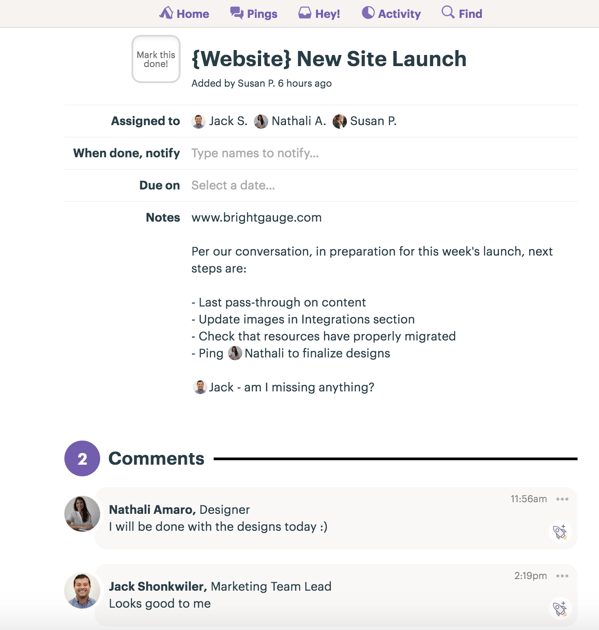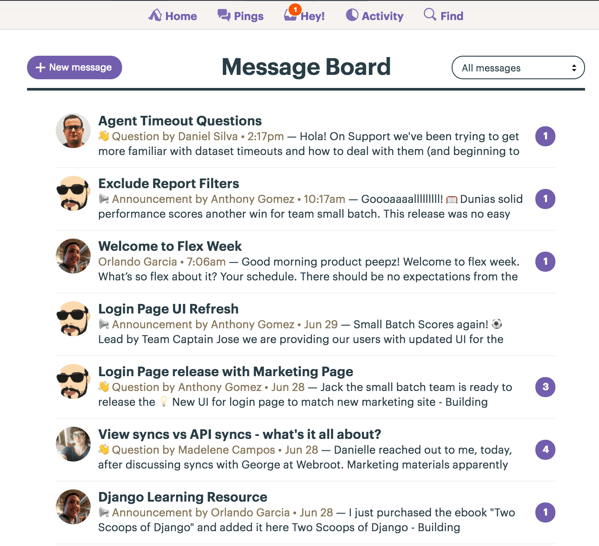Building Transparency Through Internal Documentation

The work world is changing. Gone are the days - if ever they existed - of a one-size-fits-all approach to building an organization. Entrepreneurs today are going beyond creating the product or service of their dreams - they’re also inclined to design their own version of the ideal work culture.
Whether that means hiring virtual employees from around the world, outfitting employee workspaces with treadmill desks, or adopting a Summer Fridays policy, it’s safe to say we’re in a new generation of corporate culture.
However, no matter how much things change in the workplace, our values and commitment to professionalism should always remain in place. It’s still incredibly important to foster client relationships and create a work environment that your employees are proud of, and we believe the practice of transparency is the way to do that.
At BrightGauge, we try to be open and adopt habits that encourage transparency, and we’ve picked up a few tips along the way.
Being transparent means being reliable
We often talk about how important it is to build a foundation of trust with clients and how essential this is to long-term relationships. There are many ways to build a trustworthy relationship and being like an open book is, in our opinion, really effective.
Being transparent means you have nothing to hide. You share what you’re doing, how you’re doing it, how it stacks up against promises you made, and where you have room for improvement.
With clients, we love sending regular reports that show both the good and the bad in terms of work being done. Fortunately, BrightGauge makes it easy to customize and automatically send interactive reports as often as you want. Clients will love that they can rely on you to show them how their dollars are being put to use.
Of course, you can share reports with internal teams, too. This keeps everyone in check and in the loop on key performance indicators, project statuses, and more. But, transparency doesn’t stop there.
Be transparent by putting everything in writing

Part of the shift towards a new work culture is a new practice of doing away with unnecessary emails, meetings, and other unproductive work distractions. We’re all about being more focused and less attached to emails, but we’re not okay with documentation going down the drain.
Have you ever had an important face-to-face conversation that ended with clear (in your opinion) next steps, only to follow up with your colleague some time later to hear them say, “I never said I’d do that.”? Suddenly you’re caught up in a game of he-said, she-said and the important task at hand gets neglected.
Know how you could have avoided that? By keeping a paper trail. Written communication is absolutely critical for transparency and keeping everyone aligned.
This isn’t about pointing fingers or being a tattletale. It’s about keeping everyone accountable and being transparent with work. And guess what? Email is not the only way to put things in writing.
In fact, at BrightGauge, we barely use our email addresses (writer’s note: when I started working here, this absolutely shocked me). What we do use, and strongly believe in, is a business organization tool. Our solution of choice: Basecamp.
Much like BrightGauge simplifies work by putting data in one place, Basecamp puts communication all in one place.
Relevant messages are threaded together so that all communication surrounding a particular topic is easy to track.
To put this into context, imagine a team of developers are working on a complicated piece of code that would add a necessary new feature to your product. There’s a lot of back and forth on the right process, answers to a lot of questions, and approvals on important decisions.
Now, first off, this is clearly a situation where documentation is essential, otherwise things can get messy or unravel quickly. If all communication were done via email, it’s possible that something would fall through the cracks. But, in Basecamp, everything is neatly saved in chronological order so it’s really easy to find.
To take it one step further, should a lead developer leave your company, his replacement will quickly be able to get up to speed on pending projects by finding the relevant messages within Basecamp.
Tools like Basecamp also help everyone to remain meticulously organized, since it allows you to create to-do lists, notes, documents, pitches, specific project folders, and team folders. Literally anything you need to communicate about can be done right in there.

What we’re trying to say is, make smart choices
This is less about pushing Basecamp and more about stressing the importance of communicating, practicing transparency, and being organized.
You can have the most laid-back work environment in existence, but there’s really no excuse for sloppiness. The reality is that employees don’t last forever, but projects have to go on, and once a decision has been made and executed upon, it’s going to live in the interwebs. It’s just smart to document your choices and be transparent about the journey your organization has been on.
However you choose to document, be diligent about it, make sure everyone understands your process, and be a stickler about getting it done. Seriously, at BrightGauge, we’re known to have side conversations on Slack that end in “put this in Basecamp.” We’re cool with being accountable for our work, and you should be, too.
Free MSA Template
Whether you’re planning your first managed services agreement, or you’re ready to overhaul your existing version, we've got you covered!


